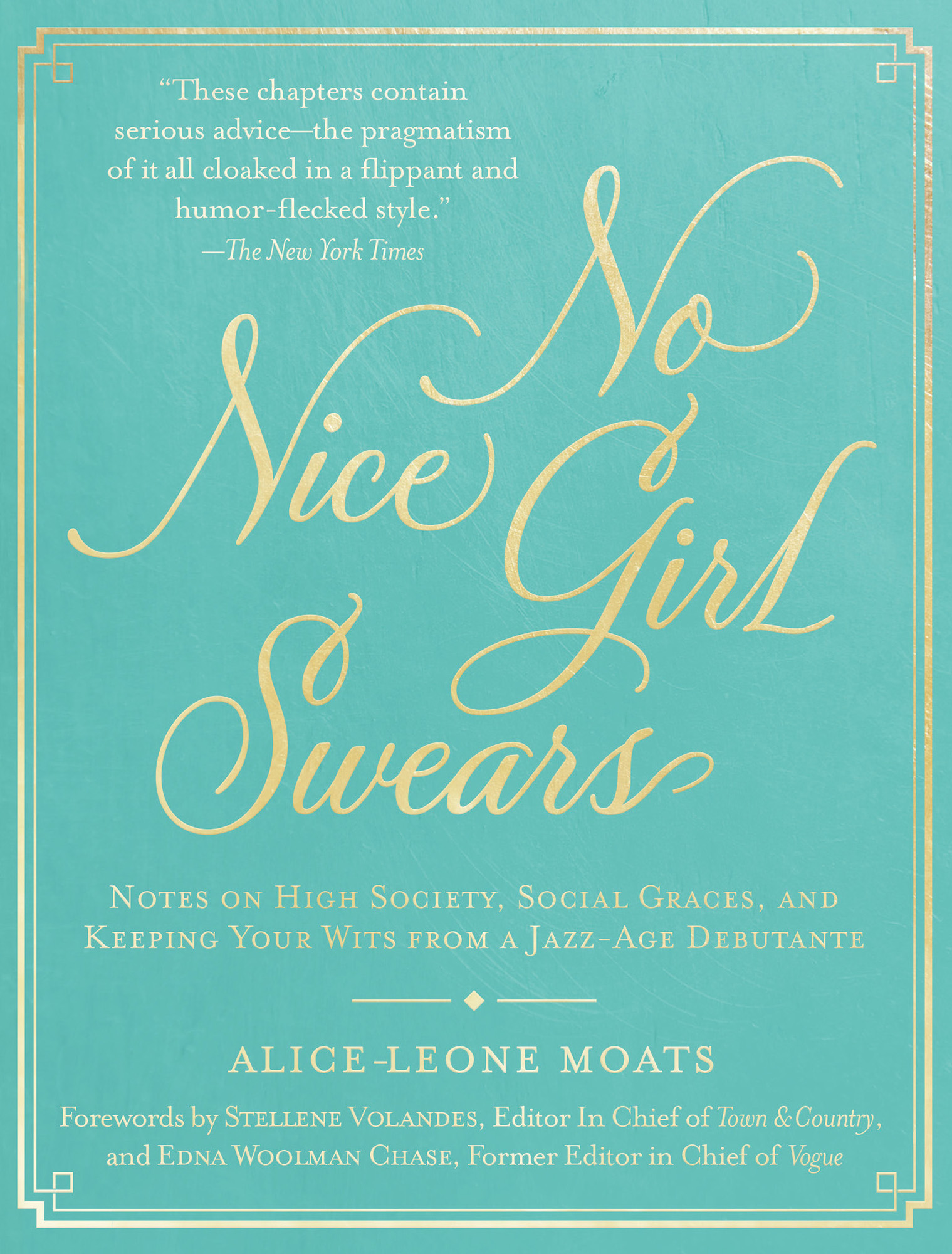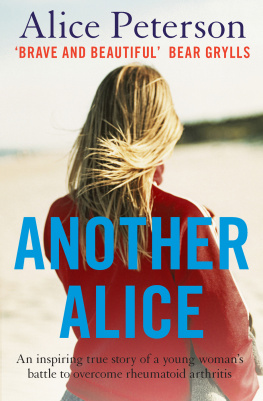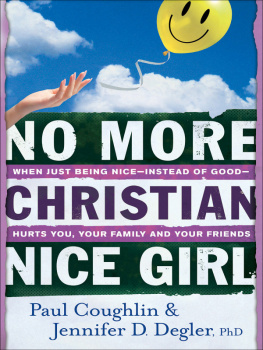Alice-Leone Moats - No Nice Girl Swears
Here you can read online Alice-Leone Moats - No Nice Girl Swears full text of the book (entire story) in english for free. Download pdf and epub, get meaning, cover and reviews about this ebook. year: 2019, publisher: Apollo Publishers, genre: Children. Description of the work, (preface) as well as reviews are available. Best literature library LitArk.com created for fans of good reading and offers a wide selection of genres:
Romance novel
Science fiction
Adventure
Detective
Science
History
Home and family
Prose
Art
Politics
Computer
Non-fiction
Religion
Business
Children
Humor
Choose a favorite category and find really read worthwhile books. Enjoy immersion in the world of imagination, feel the emotions of the characters or learn something new for yourself, make an fascinating discovery.

- Book:No Nice Girl Swears
- Author:
- Publisher:Apollo Publishers
- Genre:
- Year:2019
- Rating:5 / 5
- Favourites:Add to favourites
- Your mark:
- 100
- 1
- 2
- 3
- 4
- 5
No Nice Girl Swears: summary, description and annotation
We offer to read an annotation, description, summary or preface (depends on what the author of the book "No Nice Girl Swears" wrote himself). If you haven't found the necessary information about the book — write in the comments, we will try to find it.
No Nice Girl Swears — read online for free the complete book (whole text) full work
Below is the text of the book, divided by pages. System saving the place of the last page read, allows you to conveniently read the book "No Nice Girl Swears" online for free, without having to search again every time where you left off. Put a bookmark, and you can go to the page where you finished reading at any time.
Font size:
Interval:
Bookmark:



Notes on High Society, Social Graces, and Keeping Your Wits from a Jazz Age Debutante

ALICE-LEONE MOATS
Forewords by Stellene Volandes , Editor In Chief of Town & Country , and Edna Woolman Chase , Former Editor in Chief of Vogue

No Nice Girl Swears: Notes On High Society, Social Graces, and Keeping Your Wits from a Jazz Age Debutante
No Nice Girl Swears was originally published in 1933.
New design and text 2019 by Apollo Publishers.
All rights reserved. No part of this book may be used or reproduced in any manner whatsoever without the written permission of the publisher, except in the case of brief excerpts in critical reviews or articles, or if the content is in the public domain. All inquiries should be sent by email to Apollo Publishers at info@apollopublishers.com.
Apollo Publishers books may be purchased for educational, business, or sales promotional use. Special editions may be made available upon request. For details, contact Apollo Publishers at info@apollopublishers.com.
Visit our website at www.apollopublishers.com.
Library of Congress Cataloging-in-Publication Data is available on file.
Print ISBN: 978-1-948062-42-8
Ebook ISBN: 978-1-948062-43-5
Printed in the United States of America.
To my mother and father


O riginally published in 1933, No Nice Girl Swears was emblematic of a milestone moment in womens history and a turning point for social conventions. While debutante balls were still in full swing, Prohibition was on its last leg, and women were foraying into the workplace.
Reflecting back on No Nice Girl Swears fifty years after its original publication, Alice-Leone Moats, by then a world-traveling journalist, recounted the revolutionary nature of the book and the sensationalist headlines it received: Young Society Girl Writes a Handbook in the Spirit of Modern Jazz Age; Etiquette for Taxicab Lovemaking Lists Ten Methods of Attack; New Volume Tells Debs How to Handle Drunks. It was considered a defining book on the new etiquette, lauded and celebrated by modern, forward-thinking women like Moats, arguably the feminists of their time, and by reviewers, but also met with disdain from those who preferred the more prim and proper conventions of days gone by.
Indeed, in addition to advice on fashion and the best way of dressing for all occasions, Moats dared to publicly advise on real issues that were often simply brushed under the table. Through wit and wisdom, she wrote candidly, though with earnest sass and a bit of satire occasionally thrown in, on topics such as how to handle a date whos had too much to drink, how to avoid unwanted advances, and how to prevent a boss from taking liberties. While times have changed, this advice is certainly timeless. So, too, is advice on quality party throwing and personalized thank you notes, and her tips for style and grace, self-confidence, and putting your best foot forward.
If Moatss account of the circumstances surrounding the books original publication was told with brutal honesty, the book was originally created at the behest of publishing legendand husband to Amelia EarhartGeorge Palmer Putnam, who expected a more conservative guidebook. He proposed one ghost writer after another to Moats, until she claimed that shed decided only a man could do the job and that shed met one who had ghosted several best sellers, but would only assist under the condition that she would never share his name. Putnam agreed, and Moats pocketed the fee set for the ghost and wrote the book herself. On its completion, the book faced a range of challenges; it was dismissed by Putnam and passed between publishing houses as publishers and salespeople worried about the scandalous nature of the topics and advice featured inside. When at last it was released, it was a quick best seller.
Today, we live in a time when etiquette of any kindeven good mannersis under threat. The debates over whether chivalry is dead, or should even exist, seem hard to recall in a time when locker room talk is widely accepted. Perhaps were even living in a culture that is postpolitical correctness, where people believe weve come so far that we can reverse course and speak freely no matter how derogatoryor falseour statements may be. Certainty the internet, and particularly peoples ability to write anonymously on it, has shaken the practice of good etiquette and manners to its core.
Our rerelease of Alice-Leone Moats masterpiece, No Nice Girl Swears , comes at a time when looking at the history of etiquette presents an opportunity to consider where its come from and where society would like it to be. There is also something enthralling in taking a much-needed respite from the chaos of today and delving into the glamour of the society life of days gone by. If the release also encourages a return to elegant afternoon dresses, chic, light-colored sports clothes, all-summer getaways, champagne-infused dinner parties, or perhaps even engraved invitations, well, all the better.
Julia Abramoff
Publisher
Apollo Publishers
T o be perfectly honest, I hate the word etiquette and all the finger wagging, nose-in-the-air stuffiness, and outdated, prim rigidity it conjures. But this, my friends, is no etiquette book. No one would choose to sit next to an etiquette expert at dinner who might lecture on matters of cutlery and wine and water glasses and whether or not the invitation was indeed engraved. But for Alice-Leone Moats, you would gladly pull up a chair.
Its not that she doesnt address rules and standards in this book, first published in 1933. There are, to be clear, several chapters devoted to the details and decorum of the Deb Ball, but she does it all with equal doses of wit and wisdom and, most notably, common sense. Her guide is led not by a sense that one group of people knows what is right, but that we all shouldif, that is, we would stop and think for a moment about how to treat each other and how we would like to be treated before we acted, or put off writing a thank you, or maybe accepted a dance card invitation. (And part of the fun of reading thisand there is plenty of funis when terms like dance card pop up. For some they will prove nostalgic; for others they might inspire a Google-search rabbit hole of bygone and often charming social mores.) One of my favorite moments is when Moats considers where ethics and etiquette collide. It has grown increasingly confusing, she writes in the chapter titled Should She Ask Him In?, to determine where etiquette ends and ethics begin.... Just as good manners are a reflection of kindness and thoughtfulness, etiquette is the outgrowth of the combination of ethics and manners.
Throughout, though presented in an entertaining dinner-party-gossip tone with lively anecdotal evidence, the advice delivered here tackles this question and navigates its challenge. The guidance offered is not mired down by custom and tradition, but rather led by the reality of a time1933, yes, but with an understanding that ensuing years would bring change and we should welcome itand anchored in what she calls an innate sense of the fitness of things, and sure feelings for the correct time and place. She asks our sense of civility to lead the wayas it shouldwith accommodations made for slight romantic lapses and even cigarettes on the dance floor.
Font size:
Interval:
Bookmark:
Similar books «No Nice Girl Swears»
Look at similar books to No Nice Girl Swears. We have selected literature similar in name and meaning in the hope of providing readers with more options to find new, interesting, not yet read works.
Discussion, reviews of the book No Nice Girl Swears and just readers' own opinions. Leave your comments, write what you think about the work, its meaning or the main characters. Specify what exactly you liked and what you didn't like, and why you think so.









